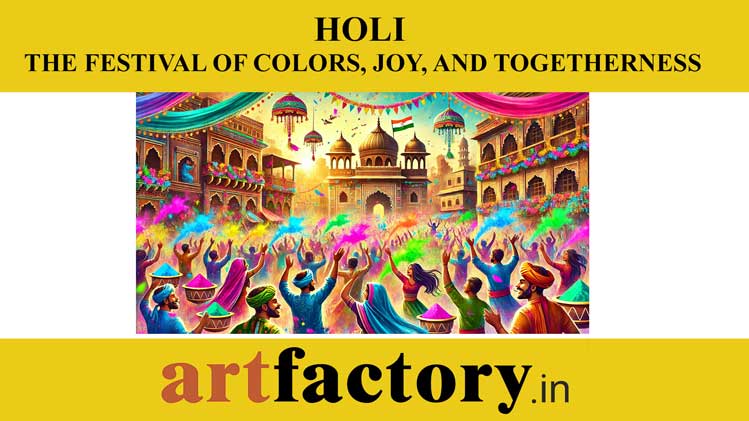
Holi: The Festival of Colors, Joy, and Togetherness
Holi, the festival of colors, is one of the most vibrant and joyous celebrations in India and across the world. This Hindu festival signifies the victory of good over evil, the arrival of spring, and a time for renewal, forgiveness, and unity. Every year, people come together to celebrate Holi with enthusiasm, drenching each other in colors, enjoying festive delicacies, and strengthening bonds with family and friends.
The Significance of Holi
Holi is deeply rooted in Indian culture and mythology. The festival marks the triumph of Bhakt Prahlad over his tyrant father, King Hiranyakashipu, due to Lord Vishnu’s divine intervention. The burning of Holika, symbolizing the end of negativity, is commemorated with Holika Dahan—a ritual bonfire held on the eve of Holi. This ritual signifies the purification of the soul and the victory of righteousness.
Apart from its religious significance, Holi also symbolizes the arrival of spring, bringing with it new energy, positivity, and joy. It is a time to let go of past grievances and embrace new beginnings with loved ones.
How is Holi Celebrated?
The main attraction of Holi celebrations is the playful splashing of colors, where people apply gulal (dry colors) and abeer (colored water) to one another. Traditional Holi songs, dance, and lively gatherings enhance the festive spirit.
Holi Celebrations Across India
Mathura and Vrindavan – Holi in Mathura and Vrindavan, the birthplace of Lord Krishna, is an elaborate affair. Lathmar Holi in Barsana is particularly famous, where women playfully hit men with sticks.
Shantiniketan, West Bengal – Known as Basanta Utsav, Holi is celebrated with cultural performances, folk music, and dance.
Punjab – Hola Mohalla, celebrated by Sikhs, adds a warrior spirit to Holi with displays of martial arts and mock battles.
Goa – Known as Shigmo, this version of Holi blends cultural performances with traditional folk dances.
Traditional Delicacies of Holi
Food is an essential part of Holi celebrations. Some of the must-try festive treats include:
Gujiya – A sweet dumpling filled with khoya, nuts, and sugar.
Thandai – A refreshing drink made with milk, nuts, and spices, often infused with bhang.
Malpua – A crispy, syrupy pancake loved during Holi.
Dahi Bhalla – A savory dish made of lentil dumplings soaked in yogurt and topped with chutneys.
Tips for a Safe and Eco-Friendly Holi
With growing environmental concerns, celebrating an eco-friendly Holi is becoming more popular. Here are a few tips:
Use organic colors made from natural ingredients.
Avoid excessive use of water.
Be mindful of animals and ensure they are not harmed during celebrations.
Opt for herbal gulal to prevent skin and eye irritations.
Holi Beyond India: A Global Celebration
Due to its universal appeal, Holi is now celebrated in different parts of the world. Countries like the USA, UK, Australia, and Canada host grand Holi festivals, where people of all backgrounds participate in the joy of colors, music, and dance.
Conclusion
Holi is more than just a festival; it is an emotion that brings people together, spreading joy, positivity, and harmony. Whether you celebrate Holi with colors, music, or traditional sweets, the essence remains the same—spreading love and happiness.
So, this Holi, embrace the spirit of togetherness, play safe, and enjoy the festival of colors with an open heart!
Happy Holi! To Know more about Holika Dahan Shubh Muhurat 2025: Timings, Puja Vidhi & Significance click here

Comments : (0)